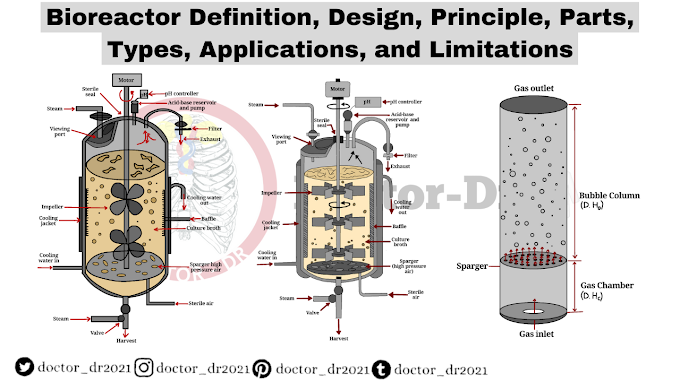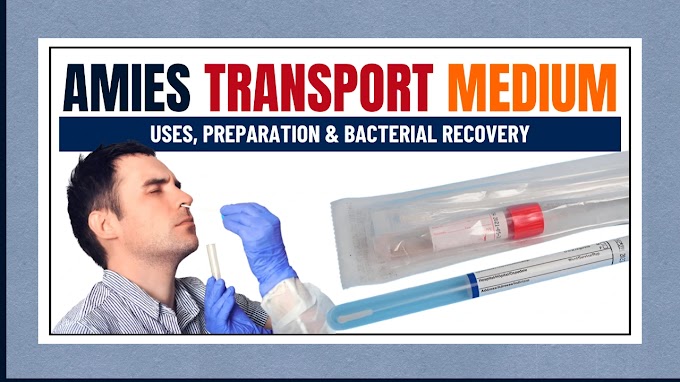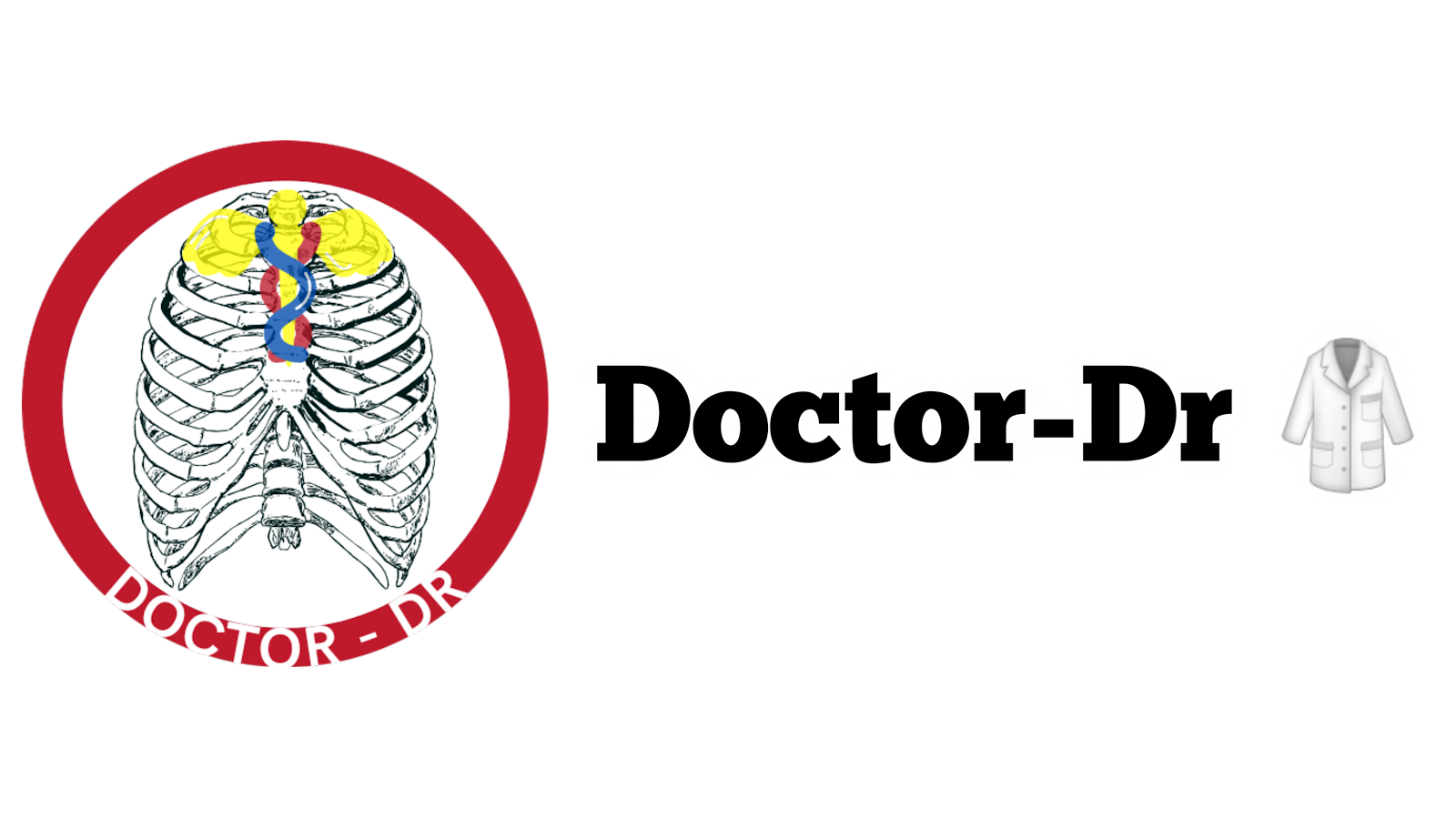Table of Contents
- What is RNA?
- Types of RNA
- Messenger RNA (mRNA): Structure and Functions
- Ribosomal RNA (rRNA): Structure and Functions
- Transfer RNA (tRNA): Structure and Functions
- Small Nuclear RNA (snRNA): Structure and Functions
- Small Nucleolar RNA (snoRNA): Structure and Functions
- MicroRNAs (miRNAs): Structure and Functions
- Long Non-coding RNA (lncRNA): Structure and Functions
- References
What is RNA?
RNA, or Ribonucleic Acid, is a polymer composed of subunits linked by phosphodiester bonds. It is a single-stranded nucleic acid that closely resembles DNA but differs in certain aspects. Unlike DNA, RNA contains ribose sugar instead of deoxyribose and features uracil as one of its nucleotide bases in place of thymine.
Types of RNA
RNA polymerase synthesizes RNA from DNA, which can be either protein-coding (messenger RNA, mRNA) or non-coding (RNA genes). Based on these functional roles, RNA molecules are classified into the following types:
- Messenger RNA (mRNA) – This RNA carries genetic information from DNA to ribosomes, the site of protein synthesis within the cell. The sequence of codons in mRNA determines the specific amino acid sequence of the resulting protein.
- Ribosomal RNA (rRNA) – It is an essential component of ribosomes, playing a structural and functional role in protein synthesis.
- Transfer RNA (tRNA) – This RNA is responsible for delivering specific amino acids to the growing polypeptide chain at the ribosome during translation.
- Small Nuclear RNA (snRNA) – Involved in the processing of pre-messenger RNA (pre-mRNA) and the regulation of gene expression.
- MicroRNA (miRNA) – These small (~22 nucleotides) RNA molecules regulate gene expression by targeting messenger RNA (mRNA) for degradation or translational repression.
- Small Nucleolar RNA (snoRNA) – Primarily involved in the modification and processing of ribosomal RNA (rRNA).
- Long Non-Coding RNA (lncRNA) – A class of RNA molecules that do not code for proteins but play significant roles in gene regulation, chromatin remodeling, and cellular processes.
- Catalytic RNA (Ribozymes) – These RNA molecules function as enzymes, catalyzing biochemical reactions, including RNA splicing and peptide bond formation.
Messenger RNA (mRNA): Structure and Functions
- mRNA is synthesized within the cell nucleus and subsequently transported to the cytoplasm, where it facilitates protein synthesis by coding for polypeptide sequences. It undergoes translation to form polypeptides and varies in size, reflecting the size of the polypeptide it encodes.
- Cells produce thousands of different mRNA molecules in small quantities, each translating into peptides required for cellular function. Some mRNA molecules are universally present in most cells, encoding proteins essential for cellular metabolism, such as the enzymes involved in glycolysis. However, certain types of mRNA are cell-specific, encoding proteins necessary for specialized functions. For instance, mRNA for hemoglobin is exclusively found in red blood cells (RBCs).
Structure and Functions of mRNA
A mature eukaryotic mRNA molecule consists of five key subunits:
1. 5′ Cap
- The 5′ cap is a modified nucleotide located at the 5′ end of the primary mRNA transcript, formed through a process called mRNA capping. This modification is crucial for regulating and stabilizing mature mRNA, facilitating translation. However, mitochondrial and chloroplastic mRNA lack this capping.
- The 5′ end contains a guanine nucleotide linked to mRNA via a 5′ to 5′ triphosphate bond. This guanine is methylated at the 7th position by methyltransferase, forming a 7-methylguanosine cap (m7G).
- The chemical structure of the cap resembles the 3′ end of the RNA molecule.
- The 5′ cap is also present in small nuclear RNAs (snRNA), which have 5′ trimethylguanosine caps, and long non-coding RNAs (lncRNA), which possess 5′ monomethyl phosphate caps.
- In bacteria and some organisms, the mRNA cap may consist of NAD+, NADH, or 3′ dephospho-coenzyme A.
- Across all organisms, mRNA undergoes decapping through a process known as messenger RNA decapping.
2, 5′ untranslated region (5′ UTR)
- The 5′ UTR is a region located upstream of the initiation codon in mRNA.
- It plays a crucial role in regulating mRNA translation in viruses, prokaryotes, and eukaryotes.
- In certain cases, some parts of the 5′ UTR undergo translation into protein products, which help regulate the main coding sequence.
- However, in some organisms, the 5′ UTR is untranslated but forms a complex secondary structure, influencing translational regulation.
3, Coding region
- This is the segment of RNA that encodes proteins.
- Within DNA, the coding region is flanked by a promoter sequence. During transcription, RNA polymerase binds to the promoter and moves along the template strand, synthesizing mRNA by adding complementary RNA nucleotides, replacing thymine (T) with uracil (U).
- Transcription continues until the termination sequence is reached.
4. Three prime untranslated region (3′ UTR)
- The 3′ UTR is the region following the translation termination codon. It contains regulatory elements that influence gene expression post-transcriptionally.
- Similar to the 5′ UTR, it does not undergo translation into proteins.
- The regulatory sequences within the 3′ UTR play roles in polyadenylation, translational efficiency, localization, and mRNA stability.
- This region contains binding sites for regulatory proteins and microRNAs (miRNAs), which regulate gene expression by either:
- Inhibiting translation
- Triggering transcript degradation
- The 3′ UTR also contains silencer elements, which bind repressor proteins, inhibiting mRNA expression.
- Many 3′ UTRs contain adenine-uracil (AU)-rich sequences, such as (AAUAAA), which serve as signals for polyadenylation, adding a poly(A) tail to the mRNA transcript.
- Additionally, the 3′ UTR promotes interactions between mRNA and cytoskeletal proteins, facilitating mRNA transport within the cell and between the nucleus and cytoplasm.
- Overall, the 3′ UTR is critical in gene regulation, ensuring the appropriate expression of genes at the right time and location.
5. Poly A tail
- The poly(A) tail consists of multiple adenosine monophosphates, forming a long stretch of adenine bases at the 3′ end of mRNA.
- It is associated with poly-A binding proteins (PABP), which play a fundamental role in mRNA translation, stability, and export.
- The poly(A) tail interacts with 5′-end proteins, promoting mRNA circularization, which enhances protein translation.
- The process of adding a poly(A) tail is called polyadenylation.
- In eukaryotes, polyadenylation is essential for the production of mature mRNA, which is subsequently used in translation.
- In bacteria, the poly(A) tail facilitates mRNA degradation, meaning it plays a significant role in gene expression regulation.
- The role of poly(A) in polyadenylation begins as transcription ends.
- The poly(A) tail is crucial for:
- Nuclear export of mRNA
- Stability of mRNA
- Efficient translation
- Over time, the poly(A) tail shortens, leading to the eventual enzymatic degradation of mRNA, marking the end of its functional lifespan.
Ribosomal RNA (rRNA): Structure and Functions
Structure
- Ribosomal ribonucleic acid (rRNA) is a type of RNA that is a fundamental component of ribosomes.
- It functions as a molecular machine that catalyzes protein synthesis.
- rRNA constitutes up to 60% of ribosome weight and plays a crucial role in ribosomal functions, including:
- Binding to messenger RNA (mRNA).
- Recruiting transfer RNA (tRNA).
- Catalyzing peptide bond formation between amino acids.
- The rRNA core determines the overall shape of the ribosome.
- It has a distinctive three-dimensional structure composed of internal loops and helices, forming specific sites within the ribosome:
- A site: Anchors incoming tRNA carrying an amino acid.
- P site: Serves as a binding site for the growing polypeptide chain.
- E site: Holds tRNA temporarily before it exits the ribosome.
- Following peptide bond formation, the tRNA briefly binds to the E site before leaving the ribosome.
- rRNA contains binding sites for ribosomal proteins and helps distinguish RNA residues from proteins.
- Proteins located on the ribosome surface interact with the rRNA core, stabilizing the ribosome's structure.
Function
- Ribosomal RNA (rRNA) is synthesized or transcribed in the cell nucleus, specifically in the nucleolus.
- The nucleolus plays a key role in ribosome biogenesis by sequestering ribosomal proteins.
- Both prokaryotic and eukaryotic ribosomes consist of a large and a small subunit, which come together during mRNA translation.
- The small subunit in prokaryotic ribosomes contains an RNA molecule of approximately 1500 nucleotides with a Svedberg coefficient of 16S.
- The small subunit, along with ribosomal proteins, forms the 30S subunit.
- The large subunit in prokaryotes consists of two RNA molecules: 23S rRNA (about 3000 nucleotides) and 5S rRNA (120 nucleotides).
- These RNA molecules combine with proteins to form the 50S subunit.
- The small subunit in eukaryotic ribosomes (40S) contains two short rRNA molecules: 5S rRNA and 5.8S rRNA, both less than 200 nucleotides in length.
- The large subunit in eukaryotic ribosomes (60S) contains two longer rRNA molecules: 28S rRNA (over 5 kilobases) and 18S rRNA (about 2 kilobases).
- The 28S, 18S, and 5.8S rRNA molecules originate from a single primary transcript derived from a cluster of identical genes.
- The 5S rRNA is transcribed separately from a different gene cluster.
- The complete eukaryotic ribosome has a Svedberg coefficient of 80S.
- Eukaryotic cells also contain rRNA within mitochondria and chloroplasts.
- Ribosomes can be associated with the endoplasmic reticulum, facilitating membrane-bound protein synthesis.
- Free ribosomes in the cytoplasm are involved in intracellular protein synthesis.
Transfer RNA (tRNA): Structure and Functions
- Transfer RNA (tRNA) is a non-coding RNA molecule responsible for transporting amino acids to the ribosome, facilitating the elongation of the growing peptide chain according to the mRNA nucleotide sequence.
- Acting as an intermediary between nucleotide sequences and amino acids, tRNA ensures accurate translation.
- As a ribonucleotide, tRNA forms hydrogen bonds with mRNA and establishes ester linkages with amino acids, effectively linking the mRNA sequence to the corresponding amino acids during translation.
Structure and Function
- tRNA is a small RNA chain consisting of approximately 80 nucleotides.
- During translation, it transfers specific amino acids to the ribosome, aligning them with the mRNA sequence to form a growing polypeptide chain.
- tRNA pairs with mRNA in a complementary and parallel manner, with each base triplet on mRNA (codon) matching a corresponding triplet on tRNA (anticodon).
- tRNAs are encoded by short molecules ranging from 70 to 90 nucleotides (5nm).
- The codon on mRNA and the anticodon on tRNA interact to drive the translation process.
- At the 3′ hydroxyl terminal of tRNA, an anticodon amino acid sequence is attached, linking ribosomes and facilitating peptide bond formation for polypeptide elongation.
- The key components of tRNA include the anticodon and the 3′ hydroxyl group terminal.
- Additional structural elements include the D-arm and T-arm, which are highly specific and play essential roles in translation.
- tRNA has a sugar-phosphate backbone that provides directionality.
- One end contains a reactive phosphate group linked to the fifth carbon atom of ribose (5′), while the opposite end features a free hydroxyl group on the third carbon (3′), establishing the 5′ to 3′ orientation of RNA.
- The 3′ terminal end carries a conserved sequence of three bases—CCA (Cytosine, Cytosine, Adenine)—which forms part of the acceptor arm, covalently attaching to the ribose sugar’s hydroxyl group.
- The acceptor arm also incorporates segments of the 5′ end of tRNA, comprising 7-9 nucleotides that base pair with each other.
- The anticodon loop, recognized by aminoacyl tRNA synthetase (AATS), binds to mRNA and determines the amino acid that attaches to the acceptor arm.
- AATS identifies and reads the D-arm from the 5′ end of tRNA.
- The D-arm stabilizes the RNA structure, influencing both the kinetics and accuracy of translation at the ribosome.
- The T-arm interacts with ribosomes, further affecting tRNA function during translation.
- The combined structure of the D-arm, T-arm, and anticodon loop resembles a cloverleaf.
- Upon folding into a tertiary structure, tRNA assumes an L-shape, with the acceptor stem, T-arm, anticodon loop, and D-arm forming an extended configuration.
Small Nuclear RNA (snRNA): Structure and Functions
- During DNA transcription, primary transcripts of mRNA, rRNA, and tRNA undergo processing in the nucleus before being exported to the cytosol.
- Small nuclear RNA (snRNA) plays a key role in mediating these processing steps.
- snRNA is transcribed by RNA polymerase II or RNA polymerase III and is approximately 150 nucleotides long.
- It exists in multiple gene copies, each contributing to different aspects of RNA synthesis.
- Certain snRNAs are integral components of spliceosomes, facilitating the conversion of pre-messenger RNA (hnRNA) into mature mRNA by excising introns and splicing exons.
- snRNA also plays a role in regulating transcription factors and RNA polymerase II.
- It contributes to telomere maintenance, ensuring chromosome stability.
- snRNA associates with specific proteins to form small nuclear ribonucleoproteins (snRNPs), which are essential for various RNA processing functions.
Small Nucleolar RNA (snoRNA): Structure and Functions
- Small nucleolar RNAs (snoRNAs) are small RNA molecules, approximately 60-300 nucleotides in length, located in the nucleolus.
- They perform various essential functions in the cell, particularly in ribosome synthesis.
- snoRNAs facilitate the processing of large RNA precursors into 28S, 18S, and 5.8S rRNA by cleaving them.
- They chemically modify numerous nucleotides in rRNA, tRNA, and snRNA by adding functional groups such as methyl groups to ribose.
- snoRNAs assist in the splicing of pre-mRNA, leading to the formation of different mature mRNA variants.
- Some snoRNAs act as templates for the synthesis of telomeres.
- In vertebrates, snoRNAs are derived from introns that are removed during transcription.
MicroRNAs (miRNAs): Structure and Functions
- MicroRNA (miRNA) is a small, non-coding, single-stranded RNA molecule consisting of 22 nucleotides, similar in size to small interfering RNAs (siRNAs).
- It is found in plants, animals, and some viruses, primarily functioning in RNA silencing and post-transcriptional gene expression regulation.
- Humans produce approximately 1,000 different miRNAs.
- miRNAs are encoded in the genome either as stand-alone genes or within introns of other genes, where they regulate mRNA expression.
- They are expressed in specific cell types at particular stages of cellular differentiation.
- Gene regulation by miRNAs occurs in two ways:
- By degrading mRNA when there is a perfect sequence match, commonly observed in plants.
- By repressing mRNA translation when the sequence match is partial.
- Two key features contribute to miRNA functionality:
- Their small size allows rapid transcription from their genes.
- They regulate mRNA gene expression without requiring a translated protein component, regardless of whether the sequence match is partial or perfect.
- Genomic studies indicate that one or more miRNAs can bind to an mRNA transcribed from DNA.
- A single miRNA can bind to approximately 200 different mRNA targets due to the presence of multiple miRNA binding sites on mRNA.
- This ability facilitates coordinated mRNA translation regulation.
Long Non-coding RNA (lncRNA): Structure and Functions
- Long non-coding RNA (lncRNA) is a diverse group of non-coding RNA transcripts, each approximately 200 nucleotides in length.
- They constitute the largest class of non-coding transcripts in the mammalian genome.
- The human genome encodes an estimated 8,000 lncRNAs.
- While many functions of lncRNA remain unidentified, scientific evidence suggests their involvement in gene regulation and various physiological processes.
- Known roles of lncRNA in gene regulation include:
- Splicing
- Translation
- Imprinting
- Transcription
- A specific type of lncRNA, known as XIST-RNA, plays a crucial role in the inactivation of one of the two X chromosomes in female vertebrates.
- lncRNAs assist in gene transcription regulation by looping DNA to bring enhancer and promoter regions closer together.
- Non-coding RNAs, including tRNA, rRNA, snoRNA, snRNA, miRNA, and lncRNA, account for approximately three-quarters of the transcription occurring within the cell nucleus.
References and Sources
- Microbiology by Prescott
- FutureLearn - Translational Research
- The Biology Dictionary – rRNA Notes
- The Biology Dictionary – tRNA Notes
- News-Medical: Types of RNA (mRNA, rRNA, and tRNA)
- Pearson Biology Coach - Transcription
- LibreTexts: Working with Molecular Genetics – Transcription and RNA Polymerases
- LibreTexts: Biology – Gene Expression and Transcription
- European Bioinformatics Institute - CHEBI Search
- Genome.gov: Transfer RNA
- Bioscience Resource: Molecular Biology
- Wikipedia: Small Nuclear RNA
- Britannica: RNA Overview
- Wikipedia: Polyadenylation
- Wikipedia: Three Prime Untranslated Region
- Wikipedia: Coding Region
- Wikipedia: Five Prime Untranslated Region
- Wikipedia: Five-Prime Cap
- Wikipedia: Messenger RNA
- Genome.gov: Messenger RNA



.webp)
.webp)





